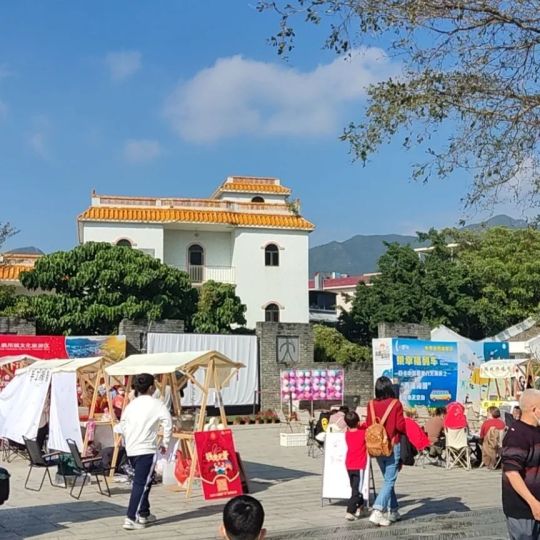#CTrip
Photo

Chinese Opera performances at Dapeng Fortress. #emilytjandra #wayneduplessis #saljublossom #teflindo #Lawrenceduplessis #Yunnan #dapengfortress #gracecandra #walkingwithemily #ctrip #adryansutantocandra #wyattduplessis #APTTI #dapengfortress (at 大鹏所城 Dapeng Fortress) https://www.instagram.com/p/Cnvu5Cnt58y/?igshid=NGJjMDIxMWI=
#emilytjandra#wayneduplessis#saljublossom#teflindo#lawrenceduplessis#yunnan#dapengfortress#gracecandra#walkingwithemily#ctrip#adryansutantocandra#wyattduplessis#aptti
0 notes
Photo

Wow sunday color-The subterranean city
6 notes
·
View notes
Text








Wang Yibo - CTRIP [180911]
144 notes
·
View notes
Text
Ðe Norþ Wind and Ðe Sun in Querct Clīÿ Iŋliɜ
6e Norf Wind and 6e Cen had à qüar̄el ebòt qhi5 o⁊ 6èm wez 6e ctroŋer. 2ìl 6à wer dicpùtiŋ wif me5 hīt and blecter, e Traveler paßt eloŋ 6e rôd ẉrap̄t in e qulôque.
"Lèt es egrī," cèd 6e Cen, "6at hī iz 6e ctroŋer qho quan ctrip 6at Traveler o⁊ hiz qulôque."
"Vèrī wèł," gròld 6e Norf Wind, and at wenc cènt e quold, hòliŋ blact egénct 6e Traveler.
Wi⁊ 6e ⁊irct gect o⁊ wind 6e èndz o⁊ 6e qulôque 2ip̄t ebòt 6e Traveler'z bodī. Bet hī im̄īdīetlī ẉrap̄t it qulôclī erònd him, and 6e harder 6e Wind blū, 6e tìter hī hèld it tū him. 6e Norf Wind tor aŋrilī at 6e qulôque, bet ał hiz è⁊̄ertc wer in vàn.
6èn 6e Cen bīgan tū ɜìn. At firct hiz bīmz wer gèntel, and in 6e plèzent warmf a⁊ter 6e biťer quold o⁊ 6e Norf Wind, 6e Traveler en⁊asend hiz qulôque and lèt it haŋ lūclī ⁊rom hiz ɜolderz. 6e Cen'z ràz grū warmer and warmer. 6e man tuk o⁊̄ hiz quap and mop̄t hiz brò. At lact he bīquàm cô hīted 6at he pułd o⁊̄ hiz qulôque, and, tū ecquàp 6e blàziŋ cenɜìn, frū himcèlf dòn in 6e wèlquem ɜàd o⁊ e trī bì 6e rôdcìd.
2 notes
·
View notes
Note
What has the scotgov done
Just utterly bored at the pretence that we’re being wildly innovative. Appointing the former Chief Operating Officer of Skyscanner as “Chief Entrepreneur” where he’s not an entrepreneur at all. He’s never built a business from scratch.
Also Skyscanner isn’t a Scottish victory. It’s a Scottish company that ‘unicorned’ but instead of making it a global company with Scotland as its home, it was sold to Chinese megacorp Ctrip.
It’s always a good headline to say “We need kids to start coding from a young age” but what’s the point if they’re just going to get hoovered up by giant corporations? You can’t talk about innovation if you’re not going to pile money into start-ups.
Every party in Parliament tries to talk up ‘Silicon Glen’ - Scotland’s answer to Silicon Valley - but the investor community here don’t invest in software, support from government bodies like Scottish Enterprise don’t follow through with meaningful support and start-ups are left in the lurch.
For example, in Scotland it’s easy to get stuck in what I call the ‘Start-Up Circuit’ - you can pitch your business to a bunch of different groups running competitions and get grant money to fund development for your Minimum Viable Product (MVP) - but once you have built that MVP you then need an influx of cash to hire developers (who are being offered fuckloads of cash from megacorps - some salaries at £120K with benefits) to Polish the product and commercialise it.
In Scotland, the investor community don’t follow through with the influx. So we have half-baked innovative ideas that fall completely through the gaps. It absolutely does my head in. We need to stop being so risk averse.
71 notes
·
View notes
Video
youtube
Genshin Impact CN x Sanya City Tourism Promotion Board x Ctrip Air Ticket x Juneyao Airlines Collab: Genshin-themed Flight Trip Promotional Video
#genshin impact#videos#genshin collab#promotional videos#the longest collab caption I've ever typed fr
13 notes
·
View notes
Text
LINXI LAKE GREEN MOUNTAIN SPRING VALLY WATER&STONE BUDDHA TEMPLE
youtube
Why you should go to linxi spring water vally mountain in anji China?
long story short because it has spring and water and vally and a beautiful temple.
Anji Lingxi Mountain Scenic Area is located in Shanchuan Township, Anji County, only 50 kilometers away from Hangzhou City, with convenient transportation. It is an eco-tourism area integrating religious culture, streams, waterfalls, canyons, strange rocks, and precious plants.
Nature has created unique tourism resources deep in the mountains of Lingxi Mountain, with towering dangerous peaks, towering ancient trees, high mountains and flowing water, and far-reaching artistic conception. The main peak, Lingxiao Peak, is 1,169.6 meters above sea level.
It is located in a forest oxygen bar with rich ecological resources, creating a unique reputation as “a new talent in northern Zhejiang, a picturesque Lingxi River”.
Why you should go to linxi spring water vally mountain in anji China?

Because it is beautiful, Anji Stone Buddha Temple is located in the Lingxi Mountain Scenic Area. It takes half an hour to forty-five minutes to climb the mountain to reach it. It is at an altitude of 1085.9 meters. It is surrounded by mountains, evergreen all year round, and beautiful scenery.
It is worth mentioning that the gate of Shifo Temple is well preserved in its original state. The gate is 2.1 meters high and 1.33 meters wide. It is made of 15 pieces of bluestone on both sides. The bluestone is carved with two lifelike, small and exquisite stone lion reliefs and Eight Immortals props. There are pictures. Carve 17. The three characters “Shifo Temple” are in Yan style regular script, each word is about 20 square centimeters. The stones on the remaining wall of Shifo Temple have turned gray or black, and shrubs and weeds have grown diagonally from the cracks in the wall, making people feel like they are in ancient times; On the Guanyin Cave in the Buddhist temple, there are four characters “Zizhu Lingshan” carved on the stone cliff.
According to the “Lin’an County Place Names Chronicle”, it was found that in the Xinyou Year of Guanghua (901 AD) at the end of the Tang Dynasty, the scholar Huang Yan visited the Stone Buddhist Temple and left a poem: “The purple air is dense and the pines surround the river, the mountains are broken by the clouds, the stone walls are cold, and hundreds of birds are chirping. Flowers surround the valley, winding paths lead to quiet and flowing water, there is a stone Buddhist temple in the core of lotus roots, and Guanyin Cave with long drops of nectar.” If verified from this poem, Shifo Temple is more than a thousand years old.
Where you should stay and how to book a hotel if you plan to go to linxi spring water vally mountain and stone buddha temple?
I use Ctrip to book the hotel when i go to linxi spring mountain vally stone buddha mountain.
You can use Ctrip’s website or app, users need to select the “hotel” option and enter the name of the destination city or region. In the search results, users can filter out suitable hotels based on their needs. Filter criteria include price, star rating, location, etc.
Once the target hotel is selected, the user needs to fill in the check-in and check-out dates. At the same time, Ctrip will also provide price and room type choices. After determining the check-in date, check-out date and room type, the user needs to fill in the check-in person’s information, including name, gender and contact information.
After filling in the information, Ctrip will generate an order and ask the user to pay. Payment methods include Alipay, WeChat, credit card and other methods, providing users with convenient payment channels.
After completing the payment, the user will receive a text message or email confirming the successful booking, and the details of the order will also be displayed in the personal account, allowing the user to check the order status at any time.
How do I get to linxi spring water mountain scenic area?
Buy Car or taxi only. first of all this scenic area is far from the city like 2 hour, and part of the road is narrow therefore no bus get there, only taxi or private taxi cab. The ticket is 160RMB with cable car back and forth.
0 notes
Text
Online to Offline Commerce Market Growth Predictions: Future Outlook till 2031
The comprehensive analysis report on global “Online to Offline Commerce market "Online to Offline Commerce market" trends encompasses a thorough study of the ongoing growth factors driving the Online to Offline Commerce market, the current market scenario, development status, and future opportunities. The market size of the Online to Offline Commerce segment is predicted based on a detailed analysis of types, applications, and end-use industry segments. The report incorporates effective strategies within the business framework aimed at improving the growth rate of the industry. Additionally, the forecast report on the Online to Offline Commerce market provides complete information regarding industry production, sales, consumption status, and market prospects, along with an in-depth Online to Offline Commerce market share analysis.
Get a Sample Copy of the Report - https://www.proficientmarketinsights.com/enquiry/request-sample/1365
The global Online to Offline Commerce Market size was USD 303048.50 million in 2024 and the market is projected to touch USD 753666.10 million by 2031, exhibiting a CAGR of 13.9% during the forecast period.
Global Key Manufacturers Covered in Online to Offline Commerce Market:
Booking Holdings: (United States)
Expedia (United States)
Uber( United States)
Didi Chuxing (China)
Airbnb (United States)
Ctrip (Trip.com Group) (China)
com (China)
Online to Offline Commerce market Segment by Type:
Group-Buying Platform
Online Shopping Platform
Business Circle Platform
Online to Offline Commerce Market Segment by Application:
Travel & Tourism
Hotel Booking
Ridesharing
Restaurant
Others
Get a Sample Copy of the Report - https://www.proficientmarketinsights.com/enquiry/request-sample/1365
Regional Analysis:
North America
Europe
Asia-Pacific
Rest of the World (RoW)
Online to Offline Commerce Market Report Highlights: -
The report covers forecast and analysis for the market on a global and regional level.
The report includes the drivers and the restraints that affect the growth of the market.
The report discusses detailed information about the market opportunities.
The market is segmented on the basis of product and end-user industry which in turn is bifurcated on the regional level.
The key target audience for the market has been determined in the report.
The revenue generated by the prominent industry players has been analyzed in the report.
Key Questions Answered in The Online to Offline Commerce Market Report:
What will the Online to Offline Commerce market growth rate?
What are the key factors driving the global Online to Offline Commerce market?
Who are the key manufacturers in Online to Offline Commerce market space?
What are the market opportunities, market risk and market overview of the Online to Offline Commerce market?
What are sales, revenue, and price analysis of top manufacturers of Online to Offline Commerce market?
Who are the distributors, traders and dealers of Online to Offline Commerce market?
What are the Online to Offline Commerce market opportunities and threats faced by the vendors in the global Online to Offline Commerce Industry?
What are sales, revenue, and price analysis by types and applications of Online to Offline Commerce Industry?
What are sales, revenue, and price analysis by regions of Online to Offline Commerce industry?
Purchase this Report (Price 2900 USD for single user license) - https://www.proficientmarketinsights.com/purchase/1365
0 notes
Text
Online to Offline Commerce Market Growth Predictions: Future Outlook till 2031
The comprehensive analysis report on global “Online to Offline Commerce market "Online to Offline Commerce market" trends encompasses a thorough study of the ongoing growth factors driving the Online to Offline Commerce market, the current market scenario, development status, and future opportunities. The market size of the Online to Offline Commerce segment is predicted based on a detailed analysis of types, applications, and end-use industry segments. The report incorporates effective strategies within the business framework aimed at improving the growth rate of the industry. Additionally, the forecast report on the Online to Offline Commerce market provides complete information regarding industry production, sales, consumption status, and market prospects, along with an in-depth Online to Offline Commerce market share analysis.
Get a Sample Copy of the Report - https://www.proficientmarketinsights.com/enquiry/request-sample/1365
The global Online to Offline Commerce Market size was USD 303048.50 million in 2024 and the market is projected to touch USD 753666.10 million by 2031, exhibiting a CAGR of 13.9% during the forecast period.
Global Key Manufacturers Covered in Online to Offline Commerce Market:
Booking Holdings: (United States)
Expedia (United States)
Uber( United States)
Didi Chuxing (China)
Airbnb (United States)
Ctrip (Trip.com Group) (China)
com (China)
Online to Offline Commerce market Segment by Type:
Group-Buying Platform
Online Shopping Platform
Business Circle Platform
Online to Offline Commerce Market Segment by Application:
Travel & Tourism
Hotel Booking
Ridesharing
Restaurant
Others
Get a Sample Copy of the Report - https://www.proficientmarketinsights.com/enquiry/request-sample/1365
Regional Analysis:
North America
Europe
Asia-Pacific
Rest of the World (RoW)
Online to Offline Commerce Market Report Highlights: -
The report covers forecast and analysis for the market on a global and regional level.
The report includes the drivers and the restraints that affect the growth of the market.
The report discusses detailed information about the market opportunities.
The market is segmented on the basis of product and end-user industry which in turn is bifurcated on the regional level.
The key target audience for the market has been determined in the report.
The revenue generated by the prominent industry players has been analyzed in the report.
Key Questions Answered in The Online to Offline Commerce Market Report:
What will the Online to Offline Commerce market growth rate?
What are the key factors driving the global Online to Offline Commerce market?
Who are the key manufacturers in Online to Offline Commerce market space?
What are the market opportunities, market risk and market overview of the Online to Offline Commerce market?
What are sales, revenue, and price analysis of top manufacturers of Online to Offline Commerce market?
Who are the distributors, traders and dealers of Online to Offline Commerce market?
What are the Online to Offline Commerce market opportunities and threats faced by the vendors in the global Online to Offline Commerce Industry?
What are sales, revenue, and price analysis by types and applications of Online to Offline Commerce Industry?
What are sales, revenue, and price analysis by regions of Online to Offline Commerce industry?
Purchase this Report (Price 2900 USD for single user license) - https://www.proficientmarketinsights.com/purchase/1365
0 notes
Photo

Lake Lugu, Yunnan. Comfortable hotel, brilliant lake. #emilytjandra #wayneduplessis #saljublossom #teflindo #Lawrenceduplessis #Yunnan #lugulake #gracecandra #walkingwithemily #ctrip #adryansutantocandra #wyattduplessis #APTTI (at 泸沽湖 Lugu Lake, Yunnan, China) https://www.instagram.com/p/CnqTsKvqc_X/?igshid=NGJjMDIxMWI=
#emilytjandra#wayneduplessis#saljublossom#teflindo#lawrenceduplessis#yunnan#lugulake#gracecandra#walkingwithemily#ctrip#adryansutantocandra#wyattduplessis#aptti
0 notes
Photo

Wow 62- The temple of wonder.
5 notes
·
View notes
Text
Online to Offline Commerce Market Overview: Exploring Industry Expansion by 2032
New Research Report on “Online to Offline Commerce Market” provide insightful data on the main market segments, dynamics, growth potentials and future prospects of industry. The study covers complete analysis on changing market trends for industry. The report shows the year-on-year growth of each segment and touches upon the different factors that are likely to impact the growth of each market segment. Each segment has analyzed completely on the basis of its production, consumption as well as revenue. And also offers Online to Offline Commerce market size and share of each separate segment in the industry.
Get a Sample Copy of the Report at - https://www.proficientmarketinsights.com/enquiry/request-sample/1365
The global Online to Offline Commerce Market size was USD 303048.50 million in 2024 and the market is projected to touch USD 753666.10 million by 2031, exhibiting a CAGR of 13.9% during the forecast period.
Top Key Players in the Online to Offline Commerce Market:
Booking Holdings: (United States)
Expedia (United States)
Uber( United States)
Didi Chuxing (China)
Airbnb (United States)
Ctrip (Trip.com Group) (China)
com (China)
Request Sample for Covid-19 Impact Analysis - https://www.proficientmarketinsights.com/enquiry/request-covid19/1365
The Online to Offline Commerce market research report presents a comprehensive assessment of the market and contains thoughtful insights, facts, historical data, and statistically supported and industry-validated market data. It also contains projections using a suitable set of assumptions and methodologies. The research report provides analysis and information according to market segments such as geographies, application, and industry.
Market split by Type, can be divided into:
Group-Buying Platform
Online Shopping Platform
Business Circle Platform
Market split by Application, can be divided into:
Travel & Tourism
Hotel Booking
Ridesharing
Restaurant
Others
Report presents a detailed picture of the market by the way of study, synthesis, and summation of data from multiple sources by an analysis of key parameters. Our Online to Offline Commerce market covers the following areas:
Online to Offline Commerce market sizing
Online to Offline Commerce market forecast
Online to Offline Commerce market industry analysis
Inquire or Share Your Questions If Any Before the Purchasing This Report -https://www.proficientmarketinsights.com/enquiry/pre-order-enquiry/1365
What Global Online to Offline Commerce Market Report Offers?
Provides strategic profiling of key players in the Online to Offline Commerce market.
Drawing a competitive landscape for the world Online to Offline Commerce industry.
Describes insights about factors affecting the Online to Offline Commerce market growth.
Analyze the Online to Offline Commerce industry share based on various factors- price analysis, supply chain analysis etc.
Extensive analysis of the industry structure along with Online to Offline Commerce market forecast 2020-2024.
Granular Analysis with respect to the current Online to Offline Commerce industry size and future perspective.
Regions Covered in Online to Offline Commerce Market Report:
North America (United States, Canada and Mexico)
Europe (Germany, UK, France, Italy, Russia and Turkey etc.)
Asia-Pacific (China, Japan, Korea, India, Australia, Indonesia, Thailand, Philippines, Malaysia and Vietnam)
South America (Brazil etc.)
Middle East and Africa (Egypt and GCC Countries)
Purchase this Report (Price 2900 USD for a Single-User License) - https://www.proficientmarketinsights.com/purchase/1365
0 notes
Text
The Rollercoaster Ride of the Global Leisure Travel Market
Hey there, fellow travel enthusiasts and armchair adventurers! Today, let’s embark on a wild journey through the not-so-serious world of the Global Leisure Travel Market. Brace yourselves for a blend of facts, a pinch of humor, and a sprinkle of sarcasm as we dissect this report that promises to make your next vacation seem like a walk in the park.

The “Oh-So-Promising” Beginning:
So, according to our market wizards and crystal ball enthusiasts, the Global Leisure Travel Market was valued at a whopping USD 340.31 Billion in 2022. Impressive, right? It’s like the travel industry was about to throw the biggest party of the century, complete with confetti and piñatas. But wait for it… (cue dramatic music) …the plot twist!
The Pandemic Plot Twist:
Enter the unexpected guest, COVID-19. This uninvited party crasher brought the global travel industry to its knees. International tourism? Yeah, it took a nosedive. The market witnessed more cancellations than a last-minute family reunion. But fear not, dear travelers, for the market is slowly emerging from the pandemic-induced hibernation. Domestic tourism is the unsung hero here, coming to the rescue like a caped crusader in the world of wanderlust.
Solo vs. Group Travel Drama:
Now, let’s talk about the eternal battle between solo and group travelers. Solo travelers, the rebels seeking independence and spontaneity, were the cool kids in town. But hold on, group travel has risen from the shadows like a phoenix, claiming the title of the fastest-growing segment. It seems everyone now wants to be part of a travel wolf pack. Who knew?
Expenditure Extravaganza:
Lodging, Transportation, Food and Beverages, Events & Entertainment — the categories in the expenditure buffet. Lodging is the superstar, stealing the spotlight with its convenient and comfy accommodations. Meanwhile, Events & Entertainment, the underdog, is on a sprint, becoming the fastest-growing category. Apparently, people crave more than just a fluffy pillow and a cozy bed; they want concerts, festivals, and Instagram-worthy moments.
Regional Showdown:
In the red corner, we have North America, flexing its tourism muscles with attractions like Las Vegas and Orlando. In the blue corner, Asia-Pacific is the dark horse, emerging as the fastest-growing region. China and India, the dynamic duo, are stealing the spotlight with their rich cultural heritage and landscapes that look straight out of a postcard.
For More Information: https://www.skyquestt.com/report/leisure-travel-market
The Heroes and Villains of the Market:
Enter our cast of characters — Marriott, Accor, Ctrip, and more. They’re locked in a fierce battle for supremacy, with online travel agencies, hotels, and cruise lines throwing punches in this gladiator-style showdown. It’s like a travel-themed WrestleMania, minus the spandex (thankfully).
Recent Developments —
More Drama: The UNWTO making a grand entrance, Airbnb investing in sustainability like a green superhero, Booking.com launching carbon-neutral experiences — it’s like a soap opera with unexpected plot twists. Even ITB Berlin is getting a makeover, going hybrid with virtual and in-person events. Who said the travel industry can’t keep up with the times?
Key Market Trends —
The Plot Thickens: Experiential travel is the new hero, with travelers craving authentic experiences over ticking off touristy checklists. Digital transformation is the sidekick, making online booking the undisputed champion. As the leisure travel industry evolves, adaptability, innovation, and a touch of digital magic are the keys to success.
Conclusion —
Buckle Up for the Adventure: In this rollercoaster ride through the Global Leisure Travel Market, one thing is clear — the travel industry is a resilient beast. From the lows of a pandemic to the highs of experiential travel, it’s a thrilling journey. So, fellow wanderers, buckle up, pack your bags, and get ready for the adventure that lies ahead. The market is bouncing back, and your next travel story might just be the plot twist you never saw coming. Safe travels!
About Us-
SkyQuest Technology Group is a Global Market Intelligence, Innovation Management & Commercialization organization that connects innovation to new markets, networks & collaborators for achieving Sustainable Development Goals.
Contact Us-
SkyQuest Technology Consulting Pvt. Ltd.
1 Apache Way,
Westford,
Massachusetts 01886
USA (+1) 617–230–0741
Email- [email protected]
Website: https://www.skyquestt.com
0 notes
Text
Tourism Industry Giants: An In-Depth Look at Market Players
Introduction:
The Global Tourism Industry is a dynamic and ever-evolving sector, with various players contributing to its growth and development. In this article, we will delve into some of the prominent companies that shape the landscape of the tourism industry, exploring their market size, market share, future outlook, growth rates, and opportunities. The companies under our scrutiny are Expedia Group Inc., Booking Holdings Inc., Airbnb Inc., Trip.com Group Limited, Agoda.com International Ltd., and Marriott International Inc.
1. Expedia Group Inc.:

Expedia Group Inc. stands tall as one of the giants in the online travel agency (OTA) realm. As of the latest available data, Expedia's market size is estimated to be around $30 billion. The company boasts a diverse portfolio of travel brands, including Expedia, Hotels.com, and Vrbo. With a focus on offering a one-stop-shop for travelers, Expedia provides services ranging from hotel reservations and flights to car rentals and vacation packages.
Expedia Group's market share in the OTA space is significant, capturing approximately 15% of the global online travel market. Despite facing stiff competition, the company continues to expand its reach through strategic acquisitions and partnerships, ensuring a steady growth rate.
The future outlook for Expedia remains promising, with an increasing trend of consumers preferring online platforms for travel bookings. As technology advances and travel becomes more accessible, Expedia is poised to capitalize on this trend and maintain its position as a leader in the industry.
2. Booking Holdings Inc.:

Booking Holdings Inc., another major player in the tourism industry, operates a constellation of travel brands, including Booking.com, Priceline, and Kayak. The company's market size is currently estimated at $70 billion, showcasing its extensive reach and influence in the market.
Booking Holdings holds a substantial market share, accounting for nearly 20% of the global online travel market. The platform's user-friendly interface and vast accommodation options contribute to its popularity among travelers.
With a growth rate exceeding the industry average, Booking Holdings continues to adapt to emerging trends. The company's focus on innovation, coupled with its strong market presence, positions it well for sustained growth in the future.
3. Airbnb Inc.:

Airbnb, a disruptor in the traditional hospitality sector, has revolutionized the way people travel and experience accommodation. While not a publicly traded company, Airbnb's estimated valuation places it at around $100 billion, reflecting its significant market presence.
Known for its unique offerings, including stays in private homes and experiences hosted by locals, Airbnb has carved a niche for itself in the travel & tourism industry. The platform's user base continues to grow, with millions of users globally.
As the travel landscape evolves, Airbnb's future outlook remains optimistic. The company's agility and ability to cater to the changing preferences of travelers position it as a formidable player in the market, presenting new opportunities for growth.
4. Trip. com Group Limited:

Trip. com Group Limited, a Chinese travel service provider, operates under various brand names, including Ctrip, Trip. com, and Skyscanner. The company's market size is estimated to be around $20 billion, reflecting its strong presence in the Asian and global travel market.
Trip. com Group commands a notable market share, particularly in the Asia-Pacific region, where it is a dominant force in online travel services. The company's comprehensive offerings, including accommodation, transportation, and vacation packages, contribute to its success.
With the Asia-Pacific region witnessing a surge in outbound tourism, Trip. com Group is well-positioned to capitalize on this trend. The company's expansion strategies and technological innovations further enhance its growth prospects.
5. Agoda International Ltd.:

Agoda, a subsidiary of Booking Holdings Inc., specializes in offering accommodation services. Although specific market size data for Agoda.com alone is not readily available, its parent company's influence and resources contribute to its significant market presence.
Agoda caters to a global user base seeking diverse accommodation options. The platform's focus on providing competitive prices and a seamless booking experience has solidified its position in the industry.
As part of Booking Holdings, Agoda benefits from the conglomerate's overall growth and stability, ensuring a positive outlook for the future.
6. Marriott International Inc.:

Marriott International Inc., a hospitality giant, operates a vast network of hotels and resorts worldwide. With a market size of approximately $50 billion, Marriott is a key player in the traditional accommodation sector.
While Marriott's market share may be distributed among various hotel chains, its global presence and brand recognition contribute to its prominence. The company caters to a diverse range of travelers, from luxury seekers to budget-conscious individuals.
Marriott's future outlook remains optimistic, with the company adapting to changing consumer preferences and incorporating sustainability initiatives. The resilience of the hospitality sector, coupled with Marriott's strategic positioning, presents ample growth opportunities.
Conclusion:
In conclusion, the tourism industry is shaped by a diverse array of players, each contributing to its vibrancy and growth. As technology continues to play a pivotal role in shaping travel experiences, companies like Expedia, Booking Holdings, Airbnb, Trip.com Group, Agoda.com, and Marriott International are at the forefront, driving innovation and meeting the evolving needs of travelers. With promising future outlooks and a commitment to adapting to industry trends, these players are likely to remain pivotal in shaping the future of the tourism landscape.
#market research#business#ken research#market analysis#market report#market research report#global tourism market#tourism market#tourism#travel
1 note
·
View note
Text
What is the solution to the dilemma of the Internet service industry?

A new round of competition has set off in the local life field that may change the landscape. Douyin and Kuaishou are stirring up trouble. HE Tuber Meituan, Didi, Ctrip, AutoNavi, etc. are all making unique moves. The business scope of super APPs is constantly expanding; in the content field, whether it is long or short videos, When it comes to information reading, everyone has entered a stable period. In order to maintain their hard-won market share, each of them dare not relax at all and frequently produce hot products.
Sailing against the current always means retreating if you don't advance. Although Internet practitioners still maintain high-intensity efforts and actively seek changes, the conversion effect after "tossing" is not satisfactory - users are not as easy to obtain as in the past, the overall market growth has slowed down, and the monthly active/daily active/arpu value has increased. Speed has also fallen into a bottleneck, increments are hard to come by, stocks are frozen, low-frequency users are falling asleep, and it is urgent to improve the efficiency of conversion links.
The ambition to improve is not lost, but it is difficult to grow and realize cash. The "buying method", which is regarded as the password of the Internet business model, also encounters the problem of high price and unreliable ROI. In the context of reducing costs and increasing efficiency, the range of trials and errors that all companies can tolerate is narrowing, but business operations are a protracted battle. In the end, is it to keep an eye on the traffic and survive in the moment? Or dance with uncertainty and gamble on the future? Or do you want to take into account both short-term and long-term benefits?
The Internet service industry has reached a crossroads of “needing both and wanting more”.
1. Operational marketing: not only attracting “new”, but also “activating”
"Both and more" means that we must not only attract new customers and find growth in the peaked market; we must also promote activation, awaken and revitalize existing users; and we must also form immediate conversions.
Wang Shui, director of the Advertising Department of Capital University of Economics and Business, believes that the current scale of Internet users has reached a growth bottleneck, and the average online time per capita has also begun to decrease, and the supply has decreased. However, advertisers still have a very large demand for traffic, and the supply exceeds demand, so the cost of traffic has risen. As traffic costs rise, advertisers' requirements for post-link effects become particularly stringent, and both platforms and advertisers become more and more demanding.
He observed an obvious trend - marketing operations, that is, marketing operations. Advertising and marketing are not just to attract new customers, but to track the entire life cycle of users and release LTV (Life Time Value).
In fact, today's users are becoming more and more "cautious". In the past, one contact could attract new customers, but now it requires multiple contacts and long-term companionship to build trust; the past extensive traffic growth method also requires further extension and in-depth exploration - in terms of time, from one meeting to the whole life In terms of cycle and space, multiple conversion opportunities extend from a single touch point. Only through precise operations can the ceiling of "traffic buying and selling" be broken through.
Liu Peng, the author of "Computational Advertising" further explained the idea of marketing operation, taking the gaming industry as an example. Previously, the gaming industry generally limited its growth to activating apps for users, but in fact it seems that a large number of users have been "activated" Some of them cannot form real activity in the end, and some of them jump out soon after entering through advertising jumps. So at this time, if you use refined marketing to operationalize marketing, let users have a sense of participation through user activities, coupons and other operational techniques. The cost of "recruiting" operations here is much lower than "recruiting" a new user.
We might as well use an elementary school application problem to make an intuitive analogy. A pool is filled with water, and while it is filling in, it is leaking out. If the filling speed is much lower than the leaking speed, then the pool will be dry soon. This is like a user's "traffic pool". Marketing to attract new users is like filling the pool with water, but the price of water has soared and the water flow has become thinner. Marketing operation is to reduce water leakage as much as possible and revitalize existing resources.
Of course, the actual process of marketing is not as simple and linear as pool filling and water leakage. In addition to reducing losses, operational marketing can also allow users to automatically ferment word-of-mouth, form a private domain effect, leverage, and even be equivalent to "smoothly" doing brand building. Build brand power and achieve product-efficiency synergy.
Huang Lei, General Manager of Tencent Advertising Industry Sales Operations, believes: "Buying ads is like paying the water bill and turning on the faucet, and the traffic will come. But if you don't pay, there will be no water. The formation of a private domain is quite It is difficult to dig a well by yourself, but once you dig it out, your traffic becomes a 'reserved' amount that can be accessed at any time without paying anymore. We can bring such long-term value to advertisers .”
Marketing operations have freed the shackles of traffic involution and suspension of investment and inefficiency. The solution can also be seen in some practices. Coca-Cola, Unilever, Great Wall Motors, etc. have all set up CGO, G stands for Growth, with growth as the guide, marketing , Operations are independent of each other.
This means that our "top-level design" is thinking holistically, "buying volume" from a global perspective, using operational methods to "retain volume", saying goodbye to the path dependence of extensive growth in the past, and setting up settings in every link that can be transformed. Fine anchor points, marketing operations, and ultimately unified goals to achieve business growth.
0 notes
Text
Project Review: Long-term and short-term rental chain boutique space around campus

In the middle of 2018, I received an invitation from a senior to participate in the adjustment and optimization of a daily rental housing project for HE Tuber college students. After research, the project was optimized. After nearly three months of operation, the MVP was initially demonstrated. Later, due to some other reasons, My senior brother ended the project, which I have always regretted, because I think there is still room for development in this project. I have recently summarized and reviewed the project. I will present it one by one according to the several stages of the implementation of the entrepreneurial project (determine the direction – determine the business model – MVP demonstration). I hope it can inspire and help students who are also concerned about the university campus market.
Next, enjoy~
The status of the project when it was taken over.
This project aims at the short-term accommodation needs of college students. It rents housing on a long-term basis from around the campus. After renovation, it is rented on a daily basis in the form of a B&B. The project started in 2016, and by the time my brother invited me in 2018, it had already been implemented in several cities such as Wuhan, Changsha, Chongqing, and Chengdu. Due to some problems in project planning and operation, the project stagnated and has been losing money. Brother Find me, hoping to adjust and optimize the project and promote further development of the project.
1. Determine the direction: user needs research
After taking over the project, the first thing I conducted was a user demand survey. I had to first clarify whether the user needs really existed, how big the market size was, and how large a company it could support, so as to determine whether this direction could be done. Is it worth doing.
Judging from the initial positioning of the project, the targeted user needs are the short-term accommodation needs of college students, so we conducted research on this part of the needs. In fact, various media, including CCTV, have reported on the demand for short-term accommodation by college students, especially college couples, that is, daily rentals. We skipped user-side research and went directly from the demand and supply side, that is, competing products. We conducted a survey and found that competing products mainly include hotels (small hotels) and budget hotels around universities.
First, we came to a university in Changsha. In a nearby alley (outside the main street), we found more than 20 small hotels. These small hotels have common characteristics:
Close distance: within one thousand meters of the school;
The decoration is simple: there is no design, the furniture is simple, and the environment is poor;
Low price: The general price is around 100 yuan, from Monday to Thursday, it is basically 60-80 yuan/night, and on weekends it is around 100 yuan;
Individual bosses: They are basically opened by nearby residents or people doing small businesses, and the operators are basically middle-aged and elderly people;
Shopping: Basically no operations, just waiting for customers to come to your door;
The same situation can be found near universities in Chongqing, Chengdu and other places. There are budget hotels such as Seven Days Inn and Home Inn near some universities, and the charges are generally 50%-100% higher than that of small hotels, or even more. ;
Moreover, during our research on small hotels, we discovered a phenomenon that “goes against common sense but exists in fact”. We found that there were some small hotels that we could not find on the two platforms Meituan and Ctrip. Question After talking to the boss, the other party said that they have not launched these platforms, but the business is not bad, has been operating and profitable, why this is important, I will talk about it below.
Secondly, we checked the market size. There are about 3,000 colleges and universities in the country, with more than 40 million college students. Considering that a college can have multiple campuses, we conservatively estimate that there are 4,000+ campuses in the country, and every two A hotel will be opened around the home campus, which can host 2,000+ stores, with a market scale of tens of billions.
To sum up, the short-term daily rental demand of college students is real and has not been well met. The market size is also large enough, and the project is feasible.
Entrepreneurship Notes: Opportunity Discovery.
Try not to start a business that does not yet exist on the market. Starting something from scratch has a very low success rate for many entrepreneurs, especially those who are in the early stages of entrepreneurship and have fewer resources. Look for businesses that already exist in the market but are still there. Business formats that are not doing well enough have a higher success rate;
If you find a phenomenon that "goes against business common sense but exists in fact", you must pay attention to it, as it often contains business opportunities. For example, we mentioned the phenomenon we discovered above. From a common sense point of view, hotels must rely on OTA platforms such as Meituan and Ctrip to divert traffic. It would be difficult to survive without these OTA platforms. However, we actually found that in the market There are hotels that can survive without using OTA platforms. The reason is that traditional hotels deal with individual customers and have very low repurchase rates. They are more of a traffic business, while hotels around universities only deal with repeat customers and have repurchase rates. Guarantee is more like user business. So both look like hotels, but the internal logic is different; when these business phenomena outside common sense are discovered, it often means a blue ocean market;
2. Determine the business model: sort out the business model
After clarifying the feasibility of the project direction, the business model of the project must be sorted out.
Sorting out the business model is to answer the following questions:
Who are the users?
What products should be used to meet the needs of users?
How to make money?
After sorting out, our final business model is as follows:
With the long-term and short-term rental service of "B&B-style hotel + self-contained apartment", we meet the long-term and short-term rental quality accommodation needs of college students, and realize profits through room revenue and rental income.
details as follows:
(1) Who is the user?
College students
(2) What products should be used to meet the needs of users?
The long-term and short-term rental service of "B&B-style hotel + self-contained apartment" meets users' long-term and short-term rental quality accommodation needs.
(I would like to explain here that the long-term rental service was not available at the beginning. It was iteratively developed during the project demonstration process. For the convenience of expression, it is explained directly in the product).
B&B-style hotels: Mainly aimed at the short-term rental needs of users, they are still traditional hotels in form. The listings are of a certain scale and concentrated, but the design and decoration refer to folk styles, and in terms of operation and management, they integrate some B&B operation methods, such as online After checking in, enter the room with the password lock;
Ziroom Apartment: Mainly aimed at the long-term rental needs of users, similar in form to Ziroom, the house is also located near the university (near the hotel), but different from Ziroom, because the user attributes are more concentrated, basically postgraduate entrance examination people, couples, people who are not used to it There are three types of single students in the dormitory, so it can provide a richer range of services. In addition to weekly cleaning, broadband/TV activation, monthly bedding cleaning, dirty clothes cleaning, etc.;
(3) How to make money?
Room income + rental income, please note here that you must do financial calculations, estimate the costs, how to control them, how much you can earn per month, how long the payback period is, etc. You must not be unclear.
Advantages of business model:
Positioning is different. Compared with traditional hotels and Ziroom, this project is purely user-centered. Because of the particularity of college student users and the demand for long-term and short-term rentals, short-term rental hotels and long-term rental apartments can be jointly operated and mutually empowered. , traditional hotels and Ziroom are more business-centered positioning. The hotel is here, so we look for users. There are Ziroom rooms here, so we look for users. In reality, hotels and apartments are business formats for different users, and In this project, because the users are here, hotels and apartments are opened and jointly operated;
Complementary business formats and joint operations. The operational capabilities of the hotel can be spilled over to the apartment, and full-time maintenance workers and cleaners can provide services to the apartment at any time to ensure maximum human resource efficiency; in terms of customer acquisition, customers from the two business types can be converted into each other, and the venues can also be used for each other;
The financial model is more reasonable. The hotel business is an asset-heavy investment model with a long return cycle, and there will be continuous cash flow inflows after the operation begins; the apartment business is an asset-light model with a short return cycle, but requires short-term cash flow support. Therefore, in terms of operations, the cash flow generated from hotel operations can be used for secondary use in apartments to generate higher returns. For example, the hotel operation generates 80,000 cash flows per month. This part of the cash flow can be used for long-term renting of two apartments for rent and decoration. Afterwards, the long-term rental will generate cash flow back to the hotel;
Things to note when starting a business: sorting out business models
The business model must be clear and proven before being copied. One of the reasons why this project stalled before was that when the business model was unclear, it started to be copied to other cities. The more sites there are, the more problems there will be;
The business model must be consistent and cannot be adapted to local conditions on key points. For example, in this project, it is a key point that the hotel listings must be of a certain scale and concentrated, so that the operation efficiency can be higher and a school can be thoroughly understood. However, before this project, various cities adopted different housing strategies, such as Wuhan, which has been implemented for several years. Each university rents one or two two-bedroom and three-bedroom apartments around each university. The distance between different houses is far away. In Changsha, a building unit and six or seven houses are rented near a university, and the partitions have been re-done. Overall decoration with hard and soft furnishings; in Chongqing, two extremely low-priced houses were rented near a university and underwent simple renovation; in Chengdu, seven or eight apartment-like rooms were rented near a university and underwent overall renovation ; Each city’s strategy is different, resulting in too high operating costs and unsustainable operations;
Before officially launching, you must do financial calculations and figure out how to make money and how much money you can make. One of the reasons why the project continues to suffer losses is that it did not do financial calculations and did not control decoration costs in advance. The decoration cost of some short-term rental houses is as high as 60,000 yuan/room, and the actual room fee income averages 120 yuan/day, 100 % occupancy rate, it will take nearly 2 years to recover the decoration costs. After including rent, labor, contract fulfillment and other costs, the recovery is far away; for some houses, the decoration cost is less than 3,000 yuan per room, and it will start soon. profit;
3. MVP argument
After the business model is determined, it enters the MVP demonstration stage. At this time, it is recommended to determine the business model before conducting MVP demonstration. The business model is the standard for single-point models in operation. This set of standards should be reusable when operating at other points. And very effective. The business model must determine the key measurement indicators and related business policies. The measurement indicators are also the indicators to be demonstrated when demonstrating the MVP.
Taking into account user characteristics and business model characteristics, we determined measurement indicators and related business policies:
Metrics:
Repurchase rate: focus on the repurchase rate every month
Occupancy rate: Pay attention to weekly and monthly occupancy rates
Profit: Pay attention to the monthly profit after deducting the three costs of rent, labor, and contract fulfillment;
operating strategy:
Attract first-time movers quickly with low prices. After comprehensively considering the rent and contract fulfillment costs, we launched a certain number of special promotions of 49 yuan/night, which were promoted directly through handouts on the main roads of the university.
Use "surprise" operations to promote repeat consumption. Considering the unit price and user characteristics, we focused on "surprise" operations on the basis of ensuring basic operations such as cleanliness and hygiene. The basic operation does not need to be perfect, 70 points is enough. The focus should be on "creating surprises for every customer". Only surprises can create deep impressions and actively spread. For this reason, we have prepared special snacks, Christmas Eve gifts for the elderly Activities such as giving away safe fruits to customers.
We chose the Chengdu store as a pilot location. Starting from mid-to-late September, after nearly three months of operation, the occupancy rate increased to more than 93%, the repurchase rate was 30%+ in November, and the profit remained at 8,000+ yuan. (7 properties)
0 notes